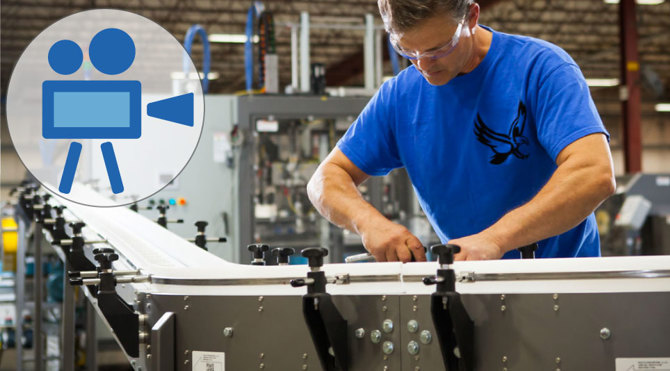7 Practical tips about filming in production for a SMED project

SMED
Single Minute Exchange of Die, is a technique that aspires to do any production line changeover in less than 10 minutes (single minute).
Filming a changeover is the first and essential part of a SMED changeover reduction project. Here are 7 practical tips that we have learnt the hard way:
- Make one video per operator
If a changeover is executed by 2 operators, you will need 2 people filming. Follow the operators at a distance of +/- 2 m. Look for a balance between overview and detail.
- Explain WHY you are filming
If the operators that you will be filming are not part of your improvement project, give them enough context, and make them confortable. Most operators don’t like to be filmed, so you will have to assure them that they will not be punished in any way. Also, insist that they do the work in their normal pace because it is important to get a realistic current state.
- Film in low resolution and frame rate!
Filming in high resolution and/or frame rate is a classic example of “over processing”, one of the 7 deadly wastes meaning producing better quality then required. You really don’t need full HD video or 50 frames per second to analyze a production environment.
You want to avoid full memory cards and long waiting times to transfer Giga Bites of data. Therefore go for the smallest file size.
- Do the “and … action!” thing
If you are filming 2 operators, group together at the beginning, do a countdown, and press the record button at the same time. This makes it a lot easier to analyze the videos afterwards
- Film before and after the changeover
Actions linked to the changeover that are done in preparation of aftercare should also be filmed. Explain this to the operator before filming
- What if something goes wrong during the changeover
Say the machine breaks down during the changeover and unforeseen handling is needed. The operator will probably say something like: ”It normally doesn’t go like this”
In response, say you understand, but keep filming until the end! You are not there to film the perfect change-over, you are there to film the current state. The operator might object to this and propose you film again later.
Respond that you may do that in the future, but nevertheless you want to finish what you started now.
- Finally, be prepared
The obvious, but essential
- 1 camera per operator
- Full batteries
- Enough memory
By Stefaan Claes, Senior Consultant at Improof Solutions

